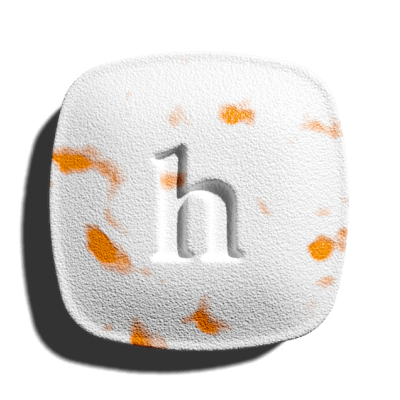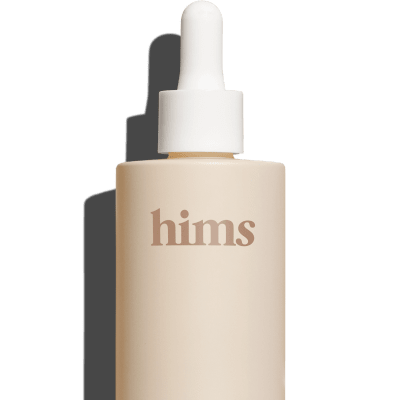Content
Over 90% of users saw increased regrowth or reduced hair loss in clinical trials
6 Ways to Reduce the Side Effects of Finasteride

If you’re a man looking to find practical treatment options for male pattern baldness (androgenetic alopecia), you’ve no doubt heard of finasteride, the active ingredient in Propecia® and one of the most popular and effective hair loss medications available today. As with most medications, finasteride comes with a set of potential side effects.
When it comes to finasteride side effects, you don’t just have to grin and bear it. Here, we’ll explore the ways in which you can reduce the side effects of finasteride with some easy tweaks and help from your healthcare provider. Read on for more.
Content
In general, the risk of side effects from finasteride is low. Research shows the vast majority of men who use finasteride over the long term benefit from a successful hair loss treatment with few or no undesired results.
Low sex drive, erectile dysfunction, and ejaculation issues are a few of the known finasteride sexual side effects.
Some common ways to reduce finasteride side effects in men include following the prescribed dosage, taking the medicine at the same time every day, or taking a lower dosage, all of which should be done with the guidance of a healthcare professional who can help you safely take a lower dose.
If you’ve tried to avoid the side effects of finasteride and they persist, talk to your healthcare provider to learn about your other options.
more hair... there's a pill for that
What Is Finasteride?
Both topical and oral finasteride are prescription drugs used to treat hair loss caused by male pattern baldness or androgenetic alopecia. Finasteride belongs to a class of medications referred to as 5-alpha-reductase inhibitors, or 5ARIs.
Oral finasteride is a popular treatment for hair loss and has been approved by the U.S. Food and Drug Administration (FDA) for treating male pattern baldness since 1997. Unlike oral finasteride, topical finasteride hasn’t yet obtained approval from the FDA, but is sometimes prescribed off-label.
Propecia is the form of finasteride that’s used to treat hair loss. It’s available as a daily finasteride tablet at a 1mg dosage. Finasteride 1mg is what you’ll likely get if you have male pattern baldness or androgenetic alopecia.
The second is Proscar®, a high-strength finasteride dosage that’s prescribed to treat benign prostatic hyperplasia (an enlarged prostate). This medication contains 5mg of finasteride per tablet. While both medications cause similar side effects, the higher dosage has additional warnings, which we’ll cover in a bit, along with how to reduce the potential for finasteride side effects.
Finasteride works by inhibiting an enzyme called 5-alpha-reductase, which converts part of your body’s testosterone into dihydrotestosterone, or DHT — the primary culprit behind male pattern baldness.
This form of hair loss develops gradually due to the effects of DHT on the hair follicle (you can check out our complete guide on DHT and hair loss to learn more about this process).
This reduction in DHT levels protects your hair follicles from miniaturization, preventing male pattern baldness from becoming worse while stimulating re-growth in some patients.
And unlike many hair growth scams on the market today, these claims are backed by science.
For example, a 1998 study published in the Journal of the American Academy of Dermatology gave 1,553 men with male pattern hair loss daily oral finasteride over a two-year period and saw significant improvements in hair count.
A newer study from 2015 published in the journal Dermatologic Therapy found that 80 percent of the 450 men with pattern hair loss who used finasteride displayed improvements over the course of 12 months.
Will you join thousands of happy customers?
4.5 average rating
Side effects are an unfortunate reality of almost all medications. However, using finasteride the right way may reduce your risk of developing side effects.
Try the following tips and techniques to use finasteride safely.
1. Take Finasteride at the Prescribed Dosage
Finasteride is prescribed at a dosage of 1mg per day to treat male pattern baldness. There’s no need to take a higher dose than this, as it won’t improve your results. Using finasteride at a higher dosage may actually increase your risk of side effects.
2. Try to Take Finasteride Around the Same Time Each Day
Finasteride typically works best when it’s taken at approximately the same time every day. You can use finasteride with or without food. Learn more about the best time to take finasteride in our guide (spoiler alert: it doesn’t really matter when, as long as you’re consistent).
3. If You Forget a Dose, Skip It and Wait for the Next One
If you forget to take finasteride, skip the missed dose and continue your regular dosing schedule the next day. Do not take more than one dose of finasteride at a time.
4. Store Finasteride Properly
Store finasteride at room temperature inside its original container. Information from the FDA notes that finasteride should be stored below 30°C (86°F), protected from light, and tightly closed. Avoid storing finasteride in the bathroom or other spaces with heat or excessive moisture
5. If You Develop Side Effects, Let Your Healthcare Provider Know
In certain cases, side effects are a temporary annoyance. Make sure to inform your healthcare provider so that they can track your progress and, if necessary, alter your dosage
6. Tell Your Healthcare Provider About Other Medications
Finasteride generally doesn’t cause interactions with other drugs. However, it’s still important to tell your healthcare provider about any other medications you use or medical conditions you may have.
Now that you know how to reduce the side effects of finasteride, we’ll touch on what the potential side effects are in the first place.
Like other FDA-approved medications, finasteride underwent a thorough testing process before it became available to the public.
Because of this, lots of data is available about its potential side effects, as well as its risks and drug interactions.
When looking into the side effects and common finasteride warnings, it’s important to be aware that two versions of finasteride are available.
Common Propecia side effects (1mg finasteride) include:
Erectile dysfunction (ED). In clinical trials, approximately 1.3 percent of men who took finasteride experienced erectile dysfunction, compared to 0.7 percent of men who used a non-therapeutic placebo.
Decreased libido. Approximately 1.8 percent of men who used finasteride 1mg reported a reduced interest in sex, compared to 1.3 percent of men who were treated with a non-therapeutic placebo.
Ejaculation disorder. In total, 1.2 percent of men who used finasteride reported issues related to ejaculation, with 0.8 percent reporting a lower semen volume. In comparison, 0.4 percent of men who used a placebo treatment reported lower semen volume.
Very few men who took finasteride in clinical trials experienced serious side effects.
In fact, only 1.2 percent of men who participated in finasteride clinical trials stopped using their medication because of adverse effects and only 3.8 percent of men who use finasteride for BPH reported experiencing any sexual side effects.
As you’d expect, side effects are more common with the higher-dose 5mg finasteride that’s used to treat BPH or benign prostatic hyperplasia.
In addition to the above side effects, Proscar lists two additional side effects, including:
Breast enlargement and/or tenderness (sometimes called gynecomastia)
Skin rash
Some of these side effects, such as sexual health issues, appear to become less common when finasteride is used over several years.
Does Topical Finasteride Have Fewer Side Effects?
Another way to potentially reduce your risk of side effects is to switch to topical finasteride — a form of finasteride that you can apply directly to your scalp.
Like oral finasteride, topical finasteride works by reducing levels of DHT. However, it does so at a scalp level, meaning there’s less of a systemic effect of DHT levels in your bloodstream and throughout your body.
In one study, researchers found that topical finasteride is effective at treating hair loss, all with a reduced likelihood of adverse reactions.
We offer topical finasteride in our topical finasteride & minoxidil spray, which can be applied directly to your scalp to promote hair growth and prevent hair loss from worsening.
Hair loss treatments, delivered
Wondering how to take finasteride without side effects? There’s no 100 percent guarantee that you can totally avoid side effects of finasteride (or any medication). However, if you’re looking into treating hair loss with oral or topical finasteride but are considered about side effects, here are some key things to remember:
While the side effects of finasteride may seem alarming at first, it’s important to keep them in context. The reason we know about these mild, uncommon side effects is that finasteride has been studied for decades and put through the most rigorous testing processes available.
Side effects are generally mild. Of the noted finasteride side effects, the most common are erectile dysfunction, a reduced level of interest in sex, and ejaculation issues. Although other side effects can occur, they’re uncommon and, for most men, cease to occur when they stop taking finasteride.
There are things you can do to reduce the side effects of finasteride, including staying consistent with your dosage and when you take your medication, storing finasteride properly. Keeping an open line of communication with your healthcare provider to discuss any potential side effects as soon as you notice them can also be very helpful.
If you’re starting to notice the early signs of hair loss and want to take action, taking finasteride can be an effective way to maintain the hair you have and stimulate growth in the areas of your scalp that are affected by male pattern baldness.
We offer finasteride online, either by itself or with minoxidil (the active ingredient in Rogaine®) in our Hair Power Pack or in our topical finasteride and minoxidil spray.
You can also explore other options for protecting and restoring your hair in our complete range of hair loss treatments. If you’re interested in using finasteride, you can learn more about what to expect in our guide to the typical finasteride results timeline.
14 Sources
- Kinter KJ, et al. (2022). Biochemistry, Dihydrotestosterone. Retrieved from https://www.ncbi.nlm.nih.gov/books/NBK557634/
- Ho CH, et al. (2021). Androgenetic Alopecia.Retrieved from https://www.ncbi.nlm.nih.gov/books/NBK430924/
- Kaufman KD, et al. (1998). Finasteride in the treatment of men with androgenetic alopecia. Retrieved from https://pubmed.ncbi.nlm.nih.gov/9777765/
- Hu R, et al. (2015). Combined treatment with oral finasteride and topical minoxidil in male androgenetic alopecia: a randomized and comparative study in Chinese patients. Retrieved from https://onlinelibrary.wiley.com/doi/abs/10.1111/dth.12246
- Zito PM, et al. (Updated 2024). Finasteride. Retrieved from https://www.ncbi.nlm.nih.gov/books/NBK513329/
- PROPECIA- finasteride tablet, film coated. Retrieved from https://www.accessdata.fda.gov/spl/data/3c8dff7e-41ab-46db-bacf-c41cc237f9d9/3c8dff7e-41ab-46db-bacf-c41cc237f9d9.xml
- PROSCAR- finasteride tablet, film coated. Retrieved from https://www.accessdata.fda.gov/spl/data/3e8b449e-a4c8-4e20-a32d-94b347a35f46/3e8b449e-a4c8-4e20-a32d-94b347a35f46.xml
- Piraccini BM, et al. (2022). Efficacy and safety of topical finasteride spray solution for male androgenetic alopecia: a phase III, randomized, controlled clinical trial.Retrieved from https://pubmed.ncbi.nlm.nih.gov/34634163/
- Questions and Answers: Finasteride Label Changes. (2016). Retrieved from https://wayback.archive-it.org/7993/20170723090425/https://www.fda.gov/Drugs/DrugSafety/InformationbyDrugClass/ucm299754.htm
- Post-finasteride syndrome: An emerging clinical problem - ScienceDirect https://doi.org/10.1016/j.ynstr.2019.100209
- Persistent Sexual Side Effects of Finasteride: Could They Be Permanent? - The Journal of Sexual Medicine https://doi.org/10.1111/j.1743-6109.2012.02846.x
- Prostate Cancer Prevention Trial (PCPT): Questions and Answers. (2013, August 14). Retrieved from https://www.cancer.gov/types/prostate/research/prostate-cancer-prevention-trial-qa
- FDA Drug Safety Communication: 5-alpha reductase inhibitors (5-ARIs) may increase the risk of a more serious form of prostate cancer. (2018, February 8). Retrieved from https://www.fda.gov/drugs/drug-safety-and-availability/fda-drug-safety-communication-5-alpha-reductase-inhibitors-5-aris-may-increase-risk-more-serious
- Prostate Cancer Prevention and Finasteride: A Conversation with NCI’s Dr. Howard Parnes. (2019, May 13). Retrieved from https://www.cancer.gov/news-events/cancer-currents-blog/2019/prostate-cancer-prevention-finasteride-parnes
Editorial Standards
Hims & Hers has strict sourcing guidelines to ensure our content is accurate and current. We rely on peer-reviewed studies, academic research institutions, and medical associations. We strive to use primary sources and refrain from using tertiary references. See a mistake? Let us know at [email protected]!
This article is for informational purposes only and does not constitute medical advice. The information contained herein is not a substitute for and should never be relied upon for professional medical advice. Always talk to your doctor about the risks and benefits of any treatment. Learn more about our editorial standards here.
Knox Beasley, MD
Dr. Knox Beasley is a board certified dermatologist specializing in hair loss. He completed his undergraduate studies at the United States Military Academy at West Point, NY, and subsequently attended medical school at Tulane University School of Medicine in New Orleans, LA.
Dr. Beasley first began doing telemedicine during his dermatology residency in 2013 with the military, helping to diagnose dermatologic conditions in soldiers all over the world.
Dr. Beasley is board certified by the American Board of Dermatology, and is a Fellow of the American Academy of Dermatology.
Originally from Nashville, TN, Dr. Beasley currently lives in North Carolina and enjoys spending time outdoors (with sunscreen of course) with his wife and two children in his spare time.
Education
Bachelor of Science, Life Sciences. United States Military Academy.
Doctor of Medicine. Tulane University School of Medicine
Training
Dermatology Residency. San Antonio Uniformed Services Health Education Consortium
Certifications
Board Certified. American Board of Dermatology
Publications
Wilson, L. M., Beasley, K. J., Sorrells, T. C., & Johnson, V. V. (2017). Congenital neurocristic cutaneous hamartoma with poliosis: A case report. Journal of cutaneous pathology, 44(11), 974–977. https://onlinelibrary.wiley.com/doi/10.1111/cup.13027
Banta, J., Beasley, K., Kobayashi, T., & Rohena, L. (2016). Encephalocraniocutaneous lipomatosis (Haberland syndrome): A mild case with bilateral cutaneous and ocular involvement. JAAD case reports, 2(2), 150–152. https://www.ncbi.nlm.nih.gov/pmc/articles/PMC4867906/
Patterson, A. T., Beasley, K. J., & Kobayashi, T. T. (2016). Fibroelastolytic papulosis: histopathologic confirmation of disease spectrum variants in a single case. Journal of cutaneous pathology, 43(2), 142–147. https://onlinelibrary.wiley.com/doi/10.1111/cup.12569
Beasley, K., Panach, K., & Dominguez, A. R. (2016). Disseminated Candida tropicalis presenting with Ecthyma-Gangrenosum-like Lesions. Dermatology online journal, 22(1), 13030/qt7vg4n68j. https://pubmed.ncbi.nlm.nih.gov/26990472/
Kimes, K., Beasley, K., & Dalton, S. R. (2015). Eruptive milia and comedones during treatment with dovitinib. Dermatology online journal, 21(9), 13030/qt8kw141mb. https://pubmed.ncbi.nlm.nih.gov/26437285/
Miladi, A., Thomas, B. C., Beasley, K., & Meyerle, J. (2015). Angioimmunoblastic t-cell lymphoma presenting as purpura fulminans. Cutis, 95(2), 113–115. https://pubmed.ncbi.nlm.nih.gov/25750965/
Beasley K, Dai JM, Brown P, Lenz B, Hivnor CM. (2013). Ablative Fractional Versus Nonablative Fractional Lasers – Where Are We and How Do We Compare Differing Products?. Curr Dermatol Rep, 2, 135–143. https://idp.springer.com/authorize?response_type=cookie&client_id=springerlink&redirect_uri=https%3A%2F%2Flink.springer.com%2Farticle%2F10.1007%2Fs13671-013-0043-0
Siami P, Beasley K, Woolen S, Zahn J. (2012). A retrospective study evaluating the efficacy and tolerability of intra-abdominal once-yearly histrelin acetate subcutaneous implant in patients with advanced prostate cancer. UroToday Int J, June 5(3), art 26. https://www.urotoday.com/volume-5-2012/vol-5-issue-3/51132-a-retrospective-study-evaluating-the-efficacy-and-tolerability-of-intra-abdominal-once-yearly-histrelin-acetate-subcutaneous-implants-in-patients-with-advanced-prostate-cancer.html
Siami P, Beasley K. (2012). Dutasteride with As-Needed Tamsulosin in Men at Risk of Benign Prostate Hypertrophy Progression. UroToday Int J, Feb 5(1), art 93. https://www.urotoday.com/volume-5-2012/vol-5-issue-1/48691-dutasteride-with-as-needed-tamsulosin-in-men-at-risk-of-benign-prostatic-hypertrophy-progression.html





